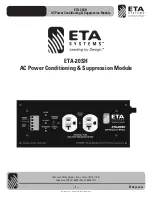
Installation and Commissioning
258
7SS52 V4 Manual
C53000-G1176-C182-3
7.1.3
General Information on the 2-Bay Bus Coupler
7.1.3.1
General
The coupler bay with the type "2-bay"-coupler is implemented with 2 bay units of the
7SS52. This is necessary when the IO capability of the bay unit (one current trans-
former, five isolators) is not sufficient for processing as 1-bay coupler. To ensure that
all functions of the coupler operate correctly, it must be ensured that the connection of
the measuring inputs, binary inputs and outputs to the bay units comply with certain
requirements.
Measuring inputs
(current transform-
ers)
The currents must be measured by both bay units separately. On couplers with only
one set of primary CTs the CT measuring inputs of the two bay units must be connect-
ed in series, with 180° phase rotation with respect to each other. The phase rotation
is required as only one CT polarity can be set, and the current flows in exactly the op-
posite direction in the second part of the coupler.
Tripping contacts
and inter-tripping
signals
Tripping contacts and inter-tripping signals must be connected in parallel on both bay
units, as each bay unit obtains its own command from the central unit.
Circuit breaker
auxiliary contact
(CB aux)
The so-called "grey zone" (fault between CB and CT) is protected by using the CB aux.
When the CB is open, the current in the coupler is inverted so that the fault immedi-
ately appears on the feeding busbar section.
As each of the bay units is separately measuring the currents, the CB aux must be
connected in parallel to both bay units.
To provide this functionality, the switching status information "CB open" (>CB OFF) is
sufficient. Unwanted tripping due to incorrect switching status feed-back signalling is
prevented by the check zone. For increased security, the option to also check the plau-
sibility of the switching state with the feed-back information "CB closed" (>CB ON) via
binary input may also be used. For this purpose, the corresponding binary inputs on
both bay units must be configured accordingly.
CLOSE-command
By means of the binary input "CB manual close" (>CB man. close) the current reversal
described above in connection with CB aux is applied immediately - despite the
switching state feed-back information still indicating that the CB is open.
This ensures that in the event of delayed opening of the CB aux contact the current
appearing will already be allocated to the correct busbar section.
The logic is implemented in each bay unit and must be connected in parallel.
Breaker-failure pro-
tection / Breaker-
failure initiation
Due to the selective current measurement, the binary input for the breaker-failure pro-
tection is also selective, i.e. with the operating mode "bus zone unbalance" each bay
unit reverses its own current. The binary inputs of both bay units must be connected
in parallel.
Note: The operating mode "bus zone unbalance" only makes sense in conjunction
with the mode "transfer bus operation", as the check zone would otherwise prevent
tripping. If the breaker failure protection function is required, then the operating mode
"current query" can be applied. In this case the check zone is not part of the tripping
decision logic.
www
. ElectricalPartManuals
. com






































